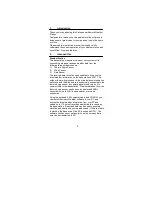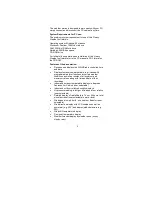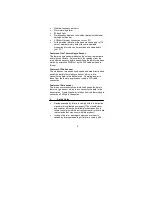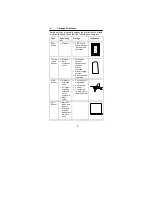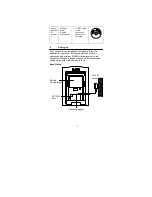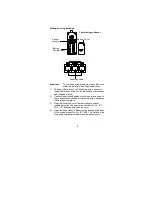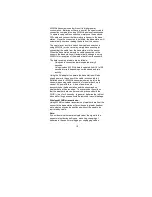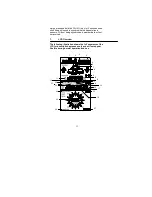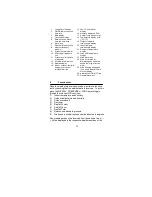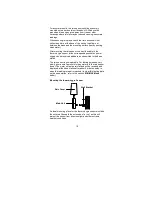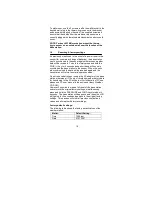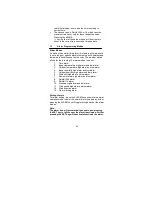
15
For accurate results, the rain sensor should be securely
mounted onto a horizontal surface about 2-3ft above the
ground and in an open area away from trees or other
coverings where rainfall may be reduced causing inaccurate
readings.
When securing into place, check that rain excess will not
collect and store at the base of the unit but can flow out
between the base and the mounting surface (test by pouring
clean water).
After mounting the rain sensor, connect the cable to the
thermo-hygro sensor at the corresponding socket so power
supply can be received and data be transmitted to the base
station.
The rain sensor is now operable. For testing purposes, very
slowly pour a small amount of clean water into the rain sensor
funnel. The water will act as rainfall and will be received and
displayed at the base station after about 2 minutes delay i.e.
when the reading interval is reached (to clear this testing data
on the base station, refer to the section “
MIN/MAX Mode
”
below).
Mounting the thermo-hygro Sensor
An ideal mounting place for the thermo-hygro sensor would be
the outer wall beneath the extension of a roof, as this will
protect the sensor from direct sunlight and other extreme
weather conditions.
Rain Cover
Wall Bracket
Main Unit


